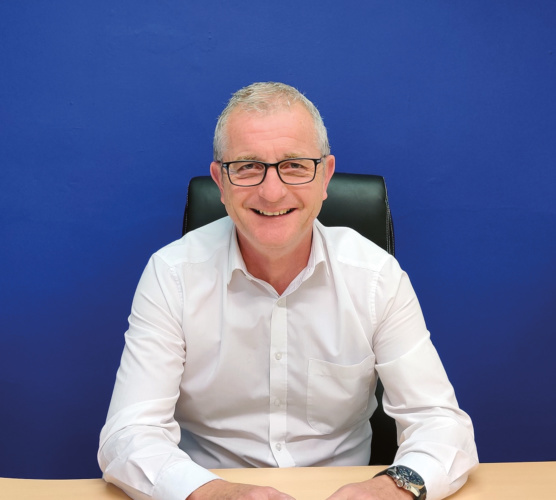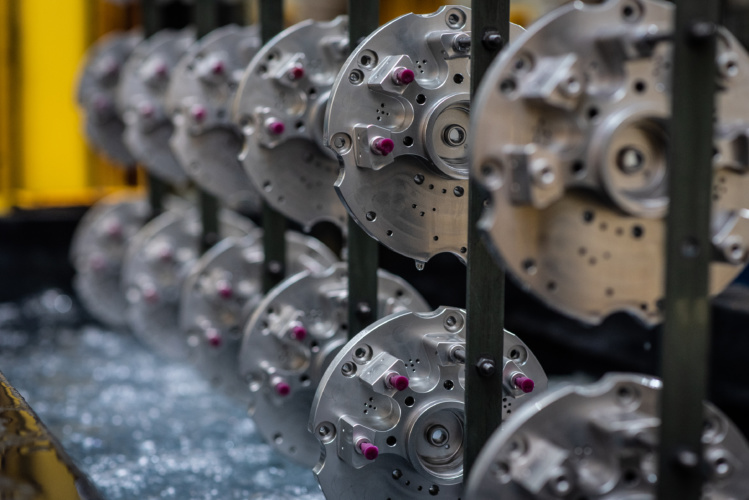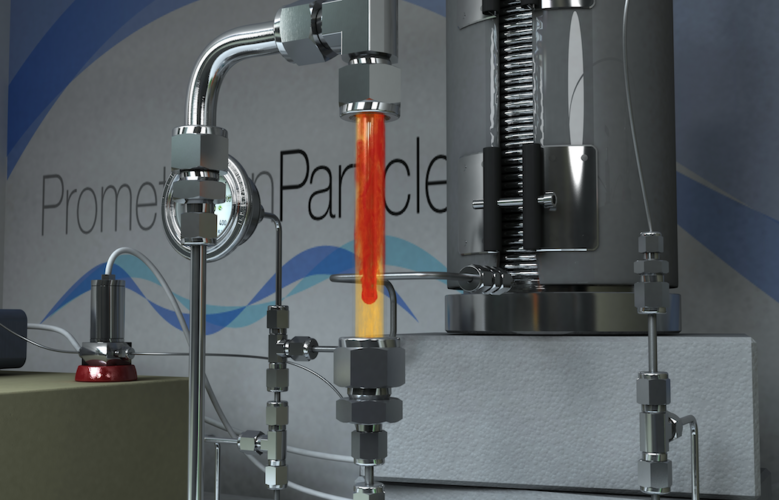Advanced materials are at the sharp end of any engineered product: key to delivering on the ever more challenging and insatiable demand for longer life, lighter weight, reduced environmental impact and advanced performance. The Engineer approached experts from three of the UK’s leading advanced materials specialists - Promethean Particles, Poeton and First Graphene - to learn more about the trends, technologies and developments in this critical field.
Meet the panel
Dr Selina Ambrose - Technical Manager, Promethean Particles
Sean Hammond – Group Director of Sales & Marketing, Poeton
Paul Ladislaus, Chief Technology Officer. First Graphene (UK) Ltd
What trends are driving developments in your technology area?
 Dr Selina Ambrose: At Promethean Particles, we work across a wide range of market sectors including electronics, inks and pigments, healthcare, coatings, and energy. There has been renewed interest in the circular economy and concerns related to the recent global pandemic. As a result, we are seeing more customer requests and invitations to collaborate on projects relating to energy capture and storage, and health and hygiene applications.
Dr Selina Ambrose: At Promethean Particles, we work across a wide range of market sectors including electronics, inks and pigments, healthcare, coatings, and energy. There has been renewed interest in the circular economy and concerns related to the recent global pandemic. As a result, we are seeing more customer requests and invitations to collaborate on projects relating to energy capture and storage, and health and hygiene applications.
Energy efficiency and the need to reduce our dependence on fossil fuels has led to the significant investments in electric vehicles, wind energy, and processes to recover and store energy, as well as capture atmospheric water and gases. These are all great opportunities for our nanoparticle technology that can act as the primary ingredient, or as a functional additive to improve the performance of current material technologies that are reaching their limits of performance in some applications.
Given the wide ranging social and economic impacts of COVID-19, we are also seeing interest in how our nanoparticles can help improve the anti-microbial and anti-viral properties of materials, which has led to some very positive results.
 Sean Hammond: Engineers are constantly looking to improve the components they are responsible for designing and manufacturing. Whether that be to solve material wear and corrosion or to implement improved efficiencies, increased output or cost reduction, product enhancements are being demanded all the time. And surface treatments are often key to ensuring that components succeed in new, challenging or extreme operating conditions.
Sean Hammond: Engineers are constantly looking to improve the components they are responsible for designing and manufacturing. Whether that be to solve material wear and corrosion or to implement improved efficiencies, increased output or cost reduction, product enhancements are being demanded all the time. And surface treatments are often key to ensuring that components succeed in new, challenging or extreme operating conditions.
This constantly changing landscape and drive for improvement means that standard coatings will not always provide the required solution. This is why we will work with our customers to tailor existing coatings and even develop brand new solutions, in order to help them achieve their goals, all through our in-house research & development and laboratory teams.
 Paul Ladislaus: The use of new advanced materials, such as graphene, is helping to drive innovation in the materials selection process, which is one of the reasons our customers tend to seek us out. In terms of application they have differing needs and requirements, but they are all looking to differentiate their products by improving performance or reducing cost. The properties of graphene make this possible, for example by creating a lighter, stronger or more durable product, that could also reduce maintenance and hence equipment downtime. In many cases it can simplify the manufacturing process which reduces overall costs further and we are also starting to see evidence of customers considering the potential environmental benefits of using graphene.
Paul Ladislaus: The use of new advanced materials, such as graphene, is helping to drive innovation in the materials selection process, which is one of the reasons our customers tend to seek us out. In terms of application they have differing needs and requirements, but they are all looking to differentiate their products by improving performance or reducing cost. The properties of graphene make this possible, for example by creating a lighter, stronger or more durable product, that could also reduce maintenance and hence equipment downtime. In many cases it can simplify the manufacturing process which reduces overall costs further and we are also starting to see evidence of customers considering the potential environmental benefits of using graphene.
First Graphene has a small but very focussed and capable Research and Development Team with facilities in Manchester (UK) and Perth (Western Australia). In terms of customer interaction, we have a global footprint and we work with our customers to understand where graphene can add value for their potential applications. We often find we can get multiple benefits from one additive – for example reduced weight and a reduction in processing costs. As it’s a high quality, high-performing additive, improvements can be seen from relatively low addition rates – typically at levels of 1% or much lower.
How is your technology helping customers meet the challenges that they are facing?
SA: Our value proposition comes from our ability to tailor a nanoparticle solution to meet the specific application requirements of our customers. As such, we regularly initiate feasibility studies to show that a particular novel nanoparticle can firstly be made and/or be made effectively and with the potential for manufacturing at scale.
We have recently completed a significant number of these feasibility studies for a variety of pigments and dyes, nanoparticles for printable conductive inks, synthetic clays, heat transfer fluids and anti-microbial/anti-viral coating additives. In addition, our proprietary and patented production method gives us the opportunity to cost effectively produce a variety of metal organic frameworks (MOFs) for applications such as gas and water capture, purification and separation, catalysis, and other ‘selective filtration’ applications, like acid scavenging to assist in substrate preservation.

SH: One solution that we always find key in supporting our customers challenges is our extensive range of anodising treatments. In the simplest form, anodising provides a hard, wear resistant layer that protects the aluminium from corrosion.
But it’s the multitude of anodising options that makes it such a good problem-solver. Not only is there a wide range of anodising techniques and seals, with each variation enhancing different properties, it can also be combined with additional materials and coatings. For example, its structure makes it ideal for paint adhesion and when combined with polymers it gives exceptional low friction properties.
Anodising also enables customers to use aluminium in applications where previously they used steel. This provides a host of benefits, including reduction in weight, faster machining, tighter tolerances and cost reductions. But most importantly, the anodising process ensures the same, or even an increase, in the final properties of the component.
PL: To prolong equipment running times and minimise downtime in the mining and mineral handling industries, sacrificial polymer liners are used to protect steel equipment from wear. A good example of this is our experience with one of our partners, newGen Group. As an early adopter, they added our PureGRAPH graphene products to their elastomer wear linings and saw significant improvements in tensile strength (50%), elongation (20%) and abrasion resistance (100%). These results gave us confidence that the use of our product would increase the mean time between failures, directly leading to large scale trials with key customers in the Mining Sector.
PureGRAPH has also been used in glass reinforced polymer (GRP) laminates that are used in boatbuilding, water storage systems and fibreglass swimming pools. Benefits include increased strength, reduced laminate thickness and light weighting. We have also demonstrated the potential for increased productivity because the use of graphene simplifies the manufacturing process. In fibreglass pools, for example, the pool wall has to withstand pressure from the weight of the water as well as being resistant to ground water penetration on the reverse side, which would otherwise result in osmotic blistering.
What’s the key product / technology for you currently and how is it being applied?
SH: We have recently launched our brand new Apticote 480A treatment. This coating has been developed at our in-house research & development centre and combines the properties of electroless nickel with fluoropolymers into one exceptional solution. It can be tailored to the customers’ requirements, ranging from optimising the corrosion protection to providing the maximum non-stick and low friction properties.
The range of properties this coating provides means that it is an ideal solution across a wide range of industrial applications. We have had customers looking to use it on cutting blades in food production, sealing jaws in packaging and pharmaceutical powder handling equipment to name just a few.
PL: The PureGRAPH brand refers to our range of high-performing graphene powder additives that can be easily incorporated into polymers and concrete to significantly enhance mechanical performance. We’ve been working on exciting projects with experts at The University of Adelaide and The University of Manchester that demonstrate how small amounts of PureGRAPH improve the compressive and tensile strength of concrete. This enables the use of thinner, lighter but more durable concrete and also reduces CO2 emissions. In addition, preliminary results show that the addition of 0.01% w/w of PureGRAPH to recycled aggregate concrete gives similar strengths to new concrete.

Due to the extensive range of applications graphene can be used for, it’s vital that we test and analyse PureGRAPH to obtain credible evidential data. We work with leading scientists and engineers through a network of industrial research organisations and academia and, as a Tier 1 Partner of the Graphene Engineering Innovation Centre, we also have access to world-class analytical equipment, which is rare for a company of our size.
SA: Whilst nanoparticle technology is not new, traditional production methods have limited their broader adoption. Existing dry methods result in a requirement for downstream processing and re-distribution into a solvent, which often has a detrimental impact on nanoparticle quality and negates their original benefits.
Until Promethean developed its patented continuous hydrothermal/solvothermal synthesis, nanoparticle manufacturing has been inefficient and costly. Our non-airborne, dispersion-based method not only leads to improved health and safety and manufacturing efficiency, but can provide tailored, non-agglomerated solutions that have long-term product stability, ideal for providing our customers with the flexibility they need in their application development.
We are currently increasing the amount of direct engagement with customers for a variety of materials, but we are seeing a significant uptick in work around MOFs and copper nanoparticles.

MOFs are highly versatile and can be used for gas capture, CO2 capture, chemical filtration and water harvesting to name a few.
Our copper nanoparticles can handled without the need for special inert atmospheres and are being applied in two very different markets: healthcare for antimicrobials/anti-virals on textiles and fabrics, and in printed electronics.
What products / technologies do you see changing your sector in the future?
PL: There are a lot of potential opportunities where graphene could add value – both in current and emerging markets. One area we are currently working on is energy storage. Specifically, we are researching ways of using graphene in battery electrode materials and also in supercapacitors – both of which will become key enablers in meeting global greenhouse gas reduction targets.
We’ve also carried out some work that shows the use of graphene in certain elastomer systems improves flame retardance. This could be useful for applications where hot work is carried out, with the associated fire risks.
SH: One challenge that is becoming an increasing issue is that of hard chrome plating. For years hard chrome has been a mainstay choice in surface treatments, providing exceptional hardness, corrosion protection and wear resistance across a range of applications. However, since the introduction of the EU’s REACH regulation it has been heavily regulated and banned in several industries and its main use is now left within aerospace. However, there will come a point where aerospace will also have to move on from Hard Chrome as well, and we have been working hard along with the rest of the industry to develop the coatings of the future. Headed up by Dr John Archer, the research & development team having been working a series of replacement options. Their hard work is paying off with several thermal spray solutions and a nickel-ceramic composite being identified as likely successors for hard chrome.
SA: One source estimates nanotechnology to grow at around a 17% compound annual growth rate (CAGR) between 2018 and 2024. As such, we are anticipating and planning for a greater uptake of nanoparticles across our target sectors. We believe Promethean’s production model and world-leading scale can help our customers deliver new and enhanced materials for applications that tackle valuable problems related to some of the mega-trends described previously; namely energy conservation, storage, printed electronics and healthcare and hygiene.




Nanogenerator consumes CO2 to generate electricity
Nice to see my my views being backed up by no less a figure than Sabine Hossenfelder https://youtu.be/QoJzs4fA4fo